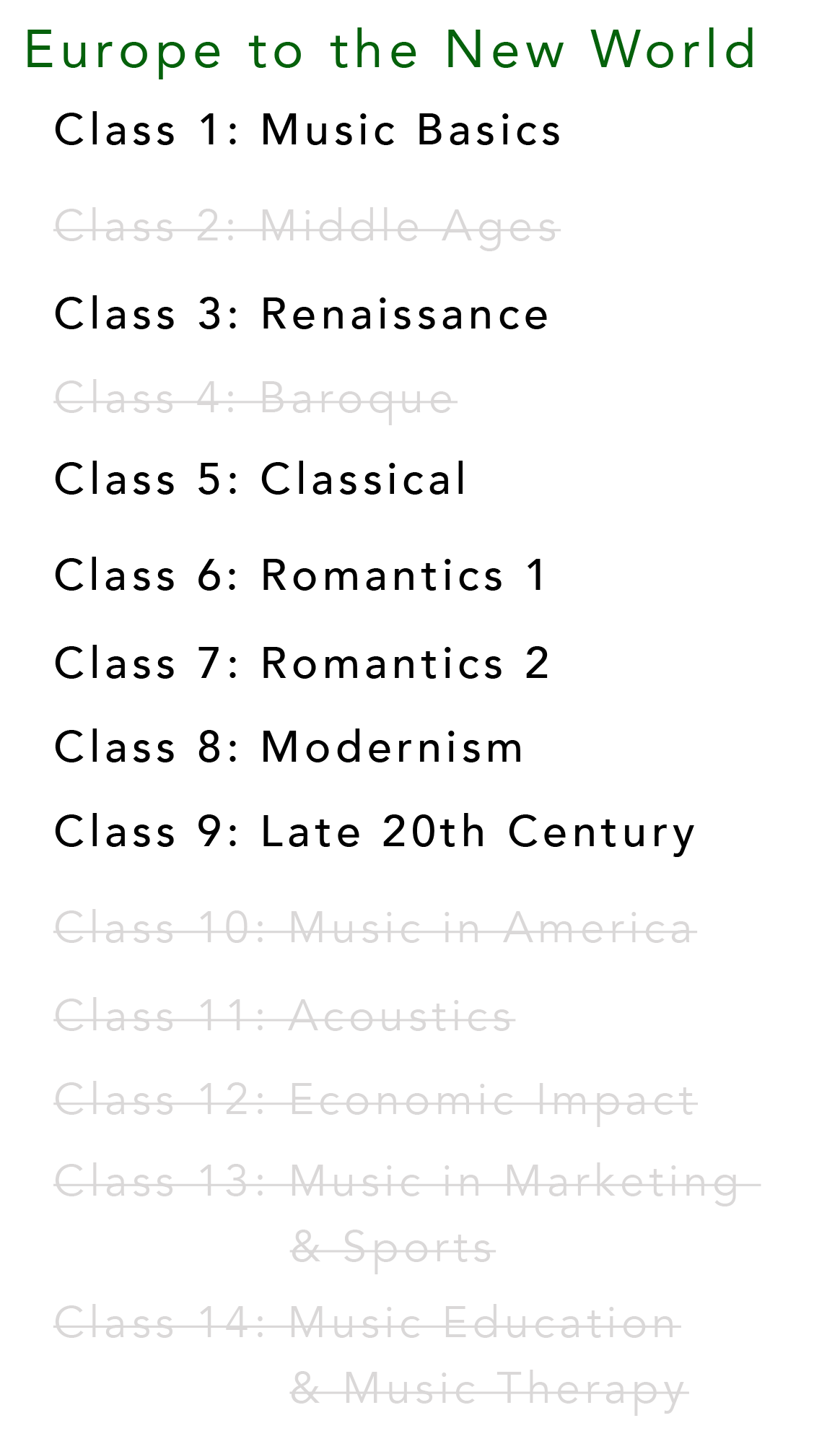Next session begins February 15th. ENROLL NOW
Europe to the New World
Music Basics
All the basic music theory you need so you can follow along with our lectures when we look through written music. Notes, rests, rhythms, clefs, and meters – it’s all there. Don’t worry, it’s really much easier than it sounds.
Renaissance (14th-16th Centuries)
Considered a “rebirth” for humanity, this era saw an explosion of advancements in all aspects of life – think Columbus, Magellan, da Vinci, and Shakespeare. The era also ushered in the beginnings of standard practices in music that are still used when writing today’s major hits, including rap and ska.
Classical (1750-1820)
While being one of the shorter periods in music, this era still saw incredible contributions to the music we hear in the concert halls. The great masters like “Papa” Haydn, Mozart, and Beethoven helped define the rules for composing that would go on to shape music for the next two centuries.
Romantics (Part 1) (early 1800’s-Pre WWI)
This is when we see the orchestra grow in size and scope. Composers began telling stories through their music like never before, and humankind and music alike saw unprecedented development through various social and political revolutions.
Romantics (Part 2)
That's right, Part 2! Given the breadth of changes in both music and society, TWO classes are needed to cover all the developments in society and art ushered in during the Romantic Era.
Modernism (First half of the 20thCentury)
Art reflects life, which was evident by the effects two world wars had on people’s perspective on the world around them. Just as war would spill over man-made borders, artists began looking to expand beyond the long-held rules and limitations of their own craft.
The Late 20th Century (1940’s-early 2000’s)
After World War II, society and composers alike found themselves grasping for a handle on the moment. This uncertainty led to a variety of new artistic genres, societal norms, and a direct challenge to the very definition of “music”. This would yield a jump over the edge into the avant garde (yup, all the weird notes-mixed-with-non-notes and the “bleep-blop-bloops”). But never fear – the Postmodernists are here! They brought us back to tonality just in time to put a big shiny bow on the second millennium.

